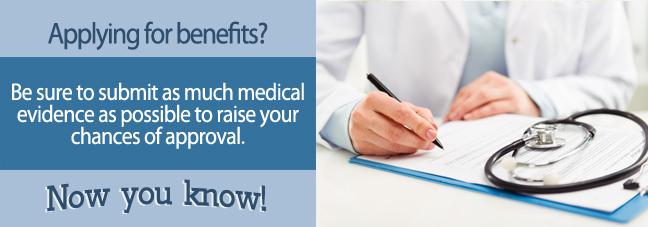If you have become disabled due to a medical condition, you may be able to collect disability benefits through the Social Security Administration (SSA). The first step to receiving Social Security Disability (SSD) benefits is called the Initial Application stage. This involves filing your application with the SSA and their initial review of your claim.
What to Expect
The Initial Application stage includes filling out your SSD benefits application completely and including all relevant information, documentation, and medical evidence. The Social Security office will make sure you qualify for benefits in the first place before sending your materials to the Disability Determination Department for a complete review of your initial application.
After a period of time, typically about three to six months, you will be notified of the SSA’s decision regarding your benefits. If approved, your notification letter will detail how much money in benefits you will be receiving monthly and when your benefits will begin.

What to Do
If you plan to begin your initial application for SSD benefits, the first thing you should do is discuss your intentions with your primary care doctor. Your doctor will be able to provide the medical evidence you need for your application, as well as written statements about your medical condition and the type of work you can reasonably be expected to perform. You should also speak with any specialists you're seeing, such as oncologists or psychologists.
Next, you must gather your complete medical history to go with your application, including any lab work, treatment history, medications, surgeries, and more. Your doctor can help provide this information to you, as well as write the statements mentioned above.
Finally, you need to fill out the SSD benefits application, which can be completed online, over the phone, or through your local Social Security office.
Tips for Success
- Review the SSA's Blue Book and determine whether or not your disability meets the medical listing. If not, you may need to fill out additional paperwork.
- Provide as much detail on your application as possible. Complete and thorough answers to each question will help prove to the person at the Disability Determination Department that your condition makes it so that you are unable to work. Avoid “yes or no” answers, which could most likely result in your application being denied. Never leave a question blank.
- Submit any ongoing medical records to the SSA as they come in. The more evidence you have on your side, the better.
- Consider hiring a disability lawyer. A lawyer will help you throughout the application process and could even improve your chances of your initial application being approved.
Key Topics
Consultative Medical Exam: The SSA may ask you to see an independent doctor other than your primary care physician for a consultative medical exam. This independent doctor will determine the extent of your disability and how your condition affects your ability to work. It is important to cooperate with the SSA’s request and follow through with this independent exam. Note that the statements and records of your long-term primary doctor will still be reviewed and are just as important.
Compassionate Allowance Program: Although the initial application process usually takes about three to six months, the SSA allows quicker application approvals for people with certain conditions. If you suffer from a rare disease, or most aggressive forms of cancer, for example, your SSD application can be approved in as little as 10 days.